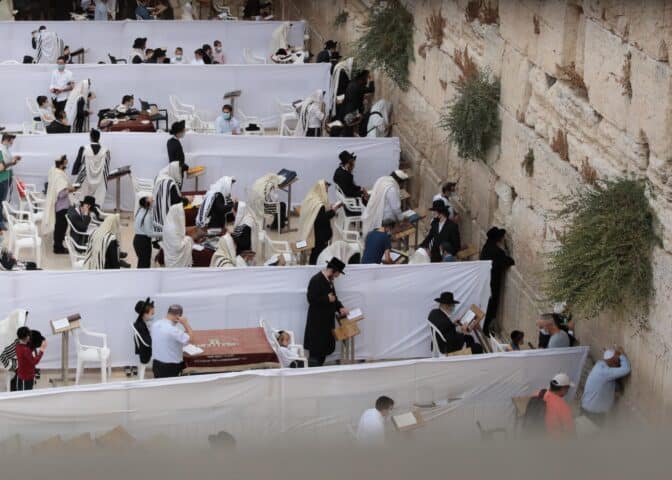The two sides of the globalization of Holocaust memory
Prof. Amos Goldberg | 27.01.2021 | Photo: Unsplash

On January 27, 1945, Soviet forces entered the Auschwitz-Birkenau concentration and extermination camp and liberated it. An estimated 1.1 million Jews and 130,000 Gypsies, Poles, Soviet prisoners of war, and other prisoners from throughout Europe, were murdered at Auschwitz-Birkenau throughout the years of its existence. The name Auschwitz, albeit not directly after the war, became the symbol of the Holocaust and the Nazi atrocities, and in fact the ultimate symbol of human evil.
Auschwitz-Birkenau was the most “international” death camp, where the largest number of prisoners were murdered. It was also the death camp that operated for the longest period of time. It was a huge complex of concentration and labor camps, and over the years hundreds of thousands of prisoners worked in it (or were deported from there to other camps). It was also the only camp in which prisoner numbers were tattooed on inmates’ (Jewish and non-Jewish) arms.
But only in the late 1990s did January 27 – the anniversary of the liberation of Auschwitz – become an international remembrance day. Germany was the first country that established the day, in 1996 – six years after the collapse of the wall and the reunification of Germany. In 2000 an international organization was established by the Prime Minister of Sweden, which would eventually be called International Holocaust Remembrance Alliance (IHRA), and which established that day as an international remembrance day, which in 2005 was also recognized as such by the European Union. Only in November 2005 did that day become global, when the UN General Assembly – with no objections – decided to establish January 27 as International Holocaust Remembrance Day.

That decision, as well as the establishment of IHRA, are expressions of what many researchers call the “globalization of Holocaust memory.” Usually, when we think about collective memory, we think about a memory that is common to more or less cohesive groups – such as ethnic, national or religious groups – for whom the memory is a central part of their identity. But in a long and fascinating process, greatly accelerated in the 1990s, the Holocaust became a global memory, or at least European and Western. In very many cities of Europe and North America, but also in Latin America and some countries of Asia and South Africa, there are museums and institutions devoted to the study and commemoration of the Holocaust. For instance, the United States Holocaust Memorial Museum in Washington, D.C.,which is possibly the largest commemoration and research institution in the world (along with Yad Vashem), is also an expression of that process. It is a federal American Museum, located at the heart of the avenue of American national symbols (the mall), which is devoted to an event to which the US had no connection. This is an exceptional and unparalleled phenomenon.
We often hear about the danger of Holocaust denial. It seems that compared to such a marginal phenomenon, the more interesting and exceptional phenomenon is actually the memory of the Holocaust, which has pushed beyond the boundaries of the nations directly involved in it (Germany and the Jews). The memory of the Holocaust has become such that a large part of the world views it, unlike any other national memory, as a sacred memory whose preservation is an ethical mission that defines a civilized person. In these senses the memory of the Holocaust is actually a cultural exception. An international conference that took place at the Van Leer Jerusalem Institute in 2008, and an edited volume published in its wake in 2015, were devoted to this exceptional phenomenon.
It is important to note that this globalization also has political aspects. For example, the aforementioned UN resolution to establish International Holocaust Remembrance Day was the initiative of an Israeli diplomat named Ron Adam, who wanted, as he recently disclosed, to offer an alternative and competing narrative to the Palestinian narrative, which he felt prevailed in the corridors of the UN and the international community. Another case was a heavily attended international ceremony to mark that day in January 2020 at Yad Vashem, which served as a stage for the presentation of a historically distorted pro-Russian narrative. Another example is the definition of anti-Semitism adopted by IHRA in 2016, and which has since become an almost compulsory code in many countries in the world. This definition views anti-Zionism and strong criticism of Israel as anti-Semitism, and thereby serves to de facto silence critical voices against Zionism and against Israel's treatment of the Palestinians.
International Holocaust Remembrance Day therefore marks the decision of many countries in the world to turn the Holocaust into a symbol of evil and the struggle against it, as well as the fact that that memory is an essentially deeply political space, sometimes even in a cynical and instrumental way.
To view the events of "What is Memory? 70 Years Later" on The Van Leer Jerusalem Institute YouTube channel.




